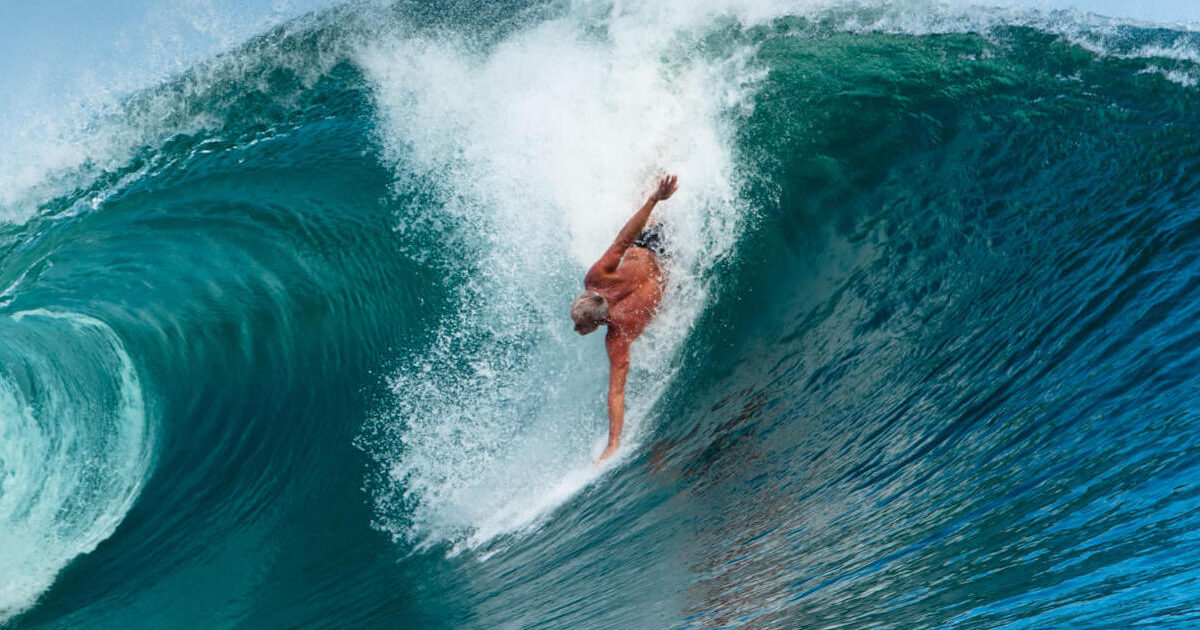Keith Malloy’s debut film, Come Hell or High Water—which showcases bodysurfers from around the world—changed the course of my life forever.
Prior to discovering this film, I had always felt like an imposter among other surfers. And after years of getting dropped in on, back-paddled, and downright overlooked while bodysurfing, I finally abandoned my swim fins and learned how to surf, for real.
However, as much as I enjoyed the new experience of riding waves on a surfboard, I often felt there was something missing.
Perhaps it was the ineffable quality of being fully immersed in the ocean while bodysurfing—rather than sitting or standing on its surface—that I longed for.
Whatever the reason for my nostalgia, Come Hell or High Water made me proud to be a bodysurfer for the first time.
Not only did the film encapsulate the simplicity and beauty of this ancient pastime, but it reinforced an idea that I had long held true: bodysurfing is the purest form of wave-riding.
Blue Mind
People around the world love swimming whether it’s in a pool, a lake, a pond, or in the ocean. It’s gone on for thousands of years, playing in the ocean energy. – Mark Cunningham
There is a beautiful scene in Come Hell or High Water that features Don King—a renowned surf photographer, and winner of the 1992 Pipeline Bodysurfing Classic—bodysurfing with his autistic son Beau.
Anyone who watches this scene can see that bodysurfing has a soothing effect on Beau, and just how much he enjoys playing in the surf with his father.
“One of the neat things about Beau,” King says, “is how comfortable he is in the water, and how much he likes it. And so, when I go in the water with Beau, for awhile, I can just play with him and forget about all the problems of autism, and it’s just me and him.”
Marine biologist and neuroscientist, Wallace J. Nichols, makes the case that being in and around water has therapeutic benefits that can make humans happier, healthier, and more connected.
In his best-selling book, Blue Mind, Nichols claims that the average person in today’s society processes more information on a daily basis than any other time in history, resulting in unprecedented levels of anxiety and depression.
Nichols believes that most people operate constantly in a reptilian “fight or flight” mindset, which should be counteracted by spending more time around the ocean.
“What happens when you’re at the water, is your brain is getting a break,” says Nichols. “Getting to the water forces us to disconnect from the stream of auditory and visual information, and switches your brain to Blue Mind, which helps us relax, reconnect with nature, reconnect with others, and reconnect with ourselves.”
Biophilia
To me, bodysurfing is the best interaction between man and nature that exists. – Mike Stewart
Come Hell or High Water presents bodysurfing as a transformative activity that has a profound impact on our relationship with the natural world, especially Mother Ocean.
In fact, it is thought that the very first human bodysurfers were inspired to emulate wave-riding sea animals such as dolphins and seals.
Renowned naturalist, E.O. Wilson, argued that our natural affinity for life—which he called biophilia—is the very essence of our humanity and binds us to all other living species.
According to Wilson, humans have an instinctive bond with all other living organisms on our planet; we are drawn to the natural world.
“We are most alive and at ease in the wilderness and among the myriad other species teeming there,” writes Thad Ziolkowski, author of The Drop, “because ocean and forest and mountain are where our ancestors spent the vast preponderance of evolutionary time—three million years versus the very recent historical past of the agrarian era.”
Maybe we can overcome much of what ails us in modern society by simply returning to our ancestral roots—playing in the ocean, whence we came.
Come Hell or High Water certainly seems to remind us of that.

